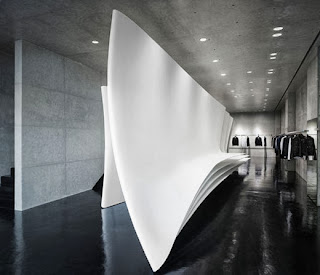In the 1980's a new tendency was born: the deconstruction,
which was also called "new modern architecture" in its beginning. It
was meant to replace postmodern architecture. A very significant difference of
this style is that it started rather from an intellectual movement than from a
significant building marking its beginning. The new slogan was "form
follows fantasy" analogous to the tradition formula pronounced by Sullivan
"form follows function". In 1988 Philip Johnson organized an
exposition called "Deconstructive Architecture" which finally brought
these ideas to a larger audience. Those ideas even had a philosophical base
developed by Jacques Derrida.
The idea was to develop buildings which show how differently
from traditional architectural conventions buildings can be built without losing
their utility and still complying with the fundamental laws of physics. The
houses looked as if a bunch of parts had been thrown together and left exactly
the way they fell on the floor. These buildings can be seen as a parallel to
other modern arts, which also became more and more abstract, questioning
whether a certain object is still art or not. Thanks to their significant
differences to all other buildings, the deconstructive ones made clear to the
observer, that architecture is an art and not just an engineering discipline.
This movement was also inspired by the futurists of the early 20th century in
Russia who also broke with all architectural conventions of their time. Because
the deconstructive houses were huge abstract sculptures you can enter rather
than real buildings, the number of realized works is rather small. Due to the
high costs and the fact that big companies were not interested in such
buildings for their representative skyscrapers and even less for their
functional buildings, only small projects for the public sector or private
clients were realized. Like the new roof for a lawyer’s office realized in 1983
until 1984 in Vienna by COOP Himmelblau.


































































